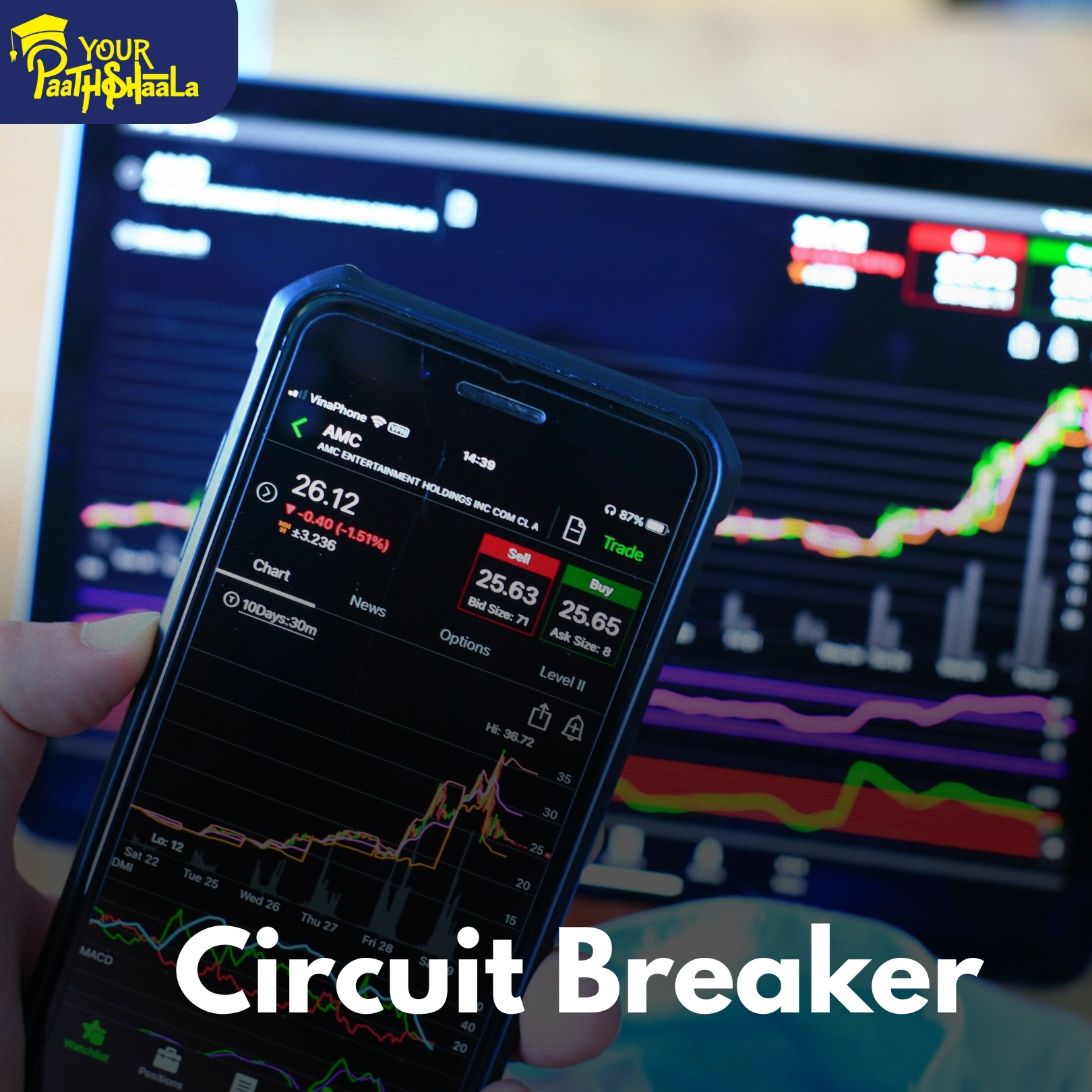What Are Circuit Breakers? How Market Halts Protect Investors and Stabilize Trading
Stock markets can be unpredictable, with prices sometimes swinging sharply within minutes or hours. These rapid moves can cause panic among investors, leading to disorderly markets and significant losses. To prevent such chaos, exchanges around the world have implemented a safety mechanism known as circuit breakers. In this detailed guide, we will explain what circuit breakers are, how they function, why they exist, and their impact on investors and the market as a whole. This blog aims to demystify the concept in simple, easy-to-understand language, helping you grasp the importance of these mechanisms in today’s financial markets.
What Are Circuit Breakers?
At their core, circuit breakers are automatic pauses in trading triggered when stock prices or market indices experience large, rapid movements beyond predefined thresholds. These temporary halts stop trading to prevent panic selling or buying, giving investors and regulators time to assess the situation calmly. The goal is to stabilize the market and maintain orderly trading.
The term “circuit breaker” is borrowed from electrical systems, where a breaker cuts off electricity to prevent damage during overloads. Similarly, in financial markets, these mechanisms act as a protective measure to avoid market meltdowns caused by extreme price fluctuations.
Why Are Circuit Breakers Necessary?
Financial markets react to numerous factors like economic data releases, corporate earnings, geopolitical events, and unexpected news. While some price movements are normal and healthy, extreme volatility can be harmful for several reasons:
Panic Selling or Buying: Sudden sharp declines or rises can trigger emotional responses, causing investors to sell or buy impulsively.
Market Disorder: Excessive volatility disrupts fair price discovery, making it difficult to determine the true value of securities.
Loss of Confidence: Frequent wild swings may shake investor confidence, reducing participation and liquidity.
Systemic Risk: Extreme market moves can have ripple effects across the economy and financial system.
Circuit breakers provide a structured way to manage these risks by temporarily halting trading, allowing market participants to make more rational decisions.
How Do Circuit Breakers Work?
This are generally based on percentage changes in market indices or individual stock prices during a trading session. When these changes exceed certain limits, trading is paused for a specified period.
Market-Wide Circuit Breakers
Market-wide halts apply to broad indices such as the S&P 500 in the United States or the Nifty 50 in India. These pauses are triggered when the overall market experiences significant declines or gains.
For example, in the U.S., the Securities and Exchange Commission (SEC) has established three levels of market-wide circuit breakers based on declines in the S&P 500 index relative to the previous day’s closing price:
| Level | Decline Threshold | Trading Halt Duration | Notes |
|---|---|---|---|
| 1 | 7% | 15 minutes | Halt only if before 3:25 p.m. ET |
| 2 | 13% | 15 minutes | Halt only if before 3:25 p.m. ET |
| 3 | 20% | Rest of the day | Halt anytime during trading hours |
If the market falls by 7% early in the day, trading stops for 15 minutes. If it recovers and then drops 13%, another 15-minute halt occurs. A 20% drop leads to a full-day trading halt. These halts do not apply near market close (after 3:25 p.m.) for Levels 1 and 2 to avoid disruption.
Individual Stock Circuit Breakers (Price Bands)
In addition to market-wide halts, exchanges impose limits on individual stocks to prevent excessive volatility in single securities. These are often called price bands or upper and lower circuits.
Upper Circuit: If a stock price rises beyond a set percentage (e.g., 10% above the previous close), trading in that stock is halted temporarily to prevent speculative bubbles.
Lower Circuit: If a stock price falls sharply (e.g., 10% below the previous close), trading is paused to avoid panic selling.
The exact percentage limits vary by country, stock category, and exchange regulations.
Circuit Breakers Around the World
Circuit breakers are used globally, but rules and thresholds differ by country and market.
United States
The U.S. introduced market-wide circuit breakers after the 1987 stock market crash. The SEC oversees these rules, which apply to major indices like the S&P 500. Individual stock halts are managed by exchanges such as the NYSE and Nasdaq.
India
India’s Securities and Exchange Board of India (SEBI) has implemented circuit breakers for both indices and individual stocks. Index-wide halts occur at 10%, 15%, and 20% moves in either direction for the Nifty 50 or Sensex. Individual stocks have varying circuit limits (2%, 5%, 10%, 20%) depending on volatility and category.
Other Markets
Countries like Japan, South Korea, and European nations also use circuit breakers tailored to their market structures and trading hours.
Historical Examples of Circuit Breakers in Action
Black Monday, 1987
The 1987 crash, when the Dow Jones Industrial Average dropped nearly 23% in one day, exposed the need for market safeguards. Circuit breakers were introduced afterward to prevent similar freefalls.
COVID-19 Pandemic, March 2020
During the early stages of the COVID-19 pandemic, markets worldwide experienced extreme volatility. The U.S. markets triggered circuit breakers multiple times in March 2020 as the S&P 500 plunged sharply, helping to reduce panic and restore calm.
Benefits of Circuit Breakers
Reduce Panic Selling: Halts prevent knee-jerk reactions and emotional trading.
Allow Time for Reflection: Investors can digest news and data before making decisions.
Maintain Market Integrity: Circuit breakers help ensure fair price discovery.
Protect Investors: They help limit sudden, massive losses during crashes.
Encourage Orderly Trading: Markets function more smoothly during turbulent periods.
Limitations and Criticisms
Delayed Price Discovery: Halts can postpone the market’s adjustment to new information.
Volatility on Reopening: Prices may gap sharply when trading resumes.
Not a Complete Solution: Circuit breakers slow crashes but do not prevent them entirely.
Potential for Trapping Investors: Traders may be unable to buy or sell during halts.
Herd Behavior: Knowing halts exist, some traders may rush trades before a halt triggers.
How Circuit Breakers Affect Investors and Traders
When a trading halt occurs:
No buying or selling can take place during the pause.
Orders may be canceled or delayed.
Investors gain time to reassess their strategies.
Market sentiment can either calm or become more anxious.
Understanding circuit breaker rules can help investors plan trades and avoid surprises during volatile periods.
Circuit Breakers vs. Trading Halts
Circuit breakers are automatic, rule-based pauses triggered by price moves. Trading halts can also be imposed manually by exchanges due to pending news, technical issues, or regulatory actions.
Tips for Investors During Circuit break
Stay calm and avoid panic trading.
Use the pause to review your investment goals and portfolio.
Stay informed about market news and regulatory announcements.
Avoid making impulsive decisions based solely on market halts.
Conclusion
Circuit breakers are essential tools designed to protect investors and stabilize markets during periods of extreme volatility. By temporarily pausing trading when prices move too quickly, they help prevent panic selling, promote rational decision-making, and maintain orderly market functioning.
Understanding how these mechanisms work empowers investors to navigate turbulent markets with greater confidence and avoid being caught off guard by sudden trading halts. While not a perfect solution, these mechanisms play a vital role in ensuring the resilience and fairness of financial markets worldwide.







